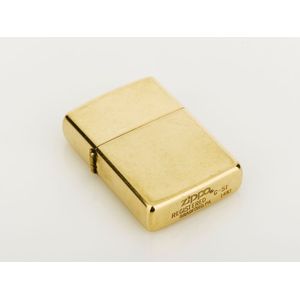Chinese Jade Seal Ink Box with Archaic Border Design
You must be a subscriber, and be logged in to view price and dealer details.
Subscribe Now to view actual auction price for this item
When you subscribe, you have the option of setting the currency in which to display prices to $Au, $US, $NZ or Stg.
- Incised - A record of a name, date or inscription, or a decoration scratched into a surface, usually of a glass or ceramic item with a blunt instrument to make a coarse indentation. Compare with engraving where the surface is cut with a sharp instrument such as a metal needle or rotating tool to achieve a fine indentation.
- Republic Period - The Chinese Republic period, also known as the Republic of China period, lasted from 1912 to 1949. It began with the overthrow of the Qing Dynasty in 1911 and the establishment of the Republic of China under Sun Yat-sen. During this period, the country underwent significant political, social, and economic changes, including the adoption of a new constitution, the expansion of civil liberties, and the modernization of the economy. However, the Republic of China period was also marked by political instability, with numerous warlords and factions vying for power and influence, and the country was eventually engulfed in a civil war between the Nationalists and the Communists. The Republic of China period came to an end in 1949, when the Communists emerged victorious and established the People's Republic of China, while the Nationalists retreated to Taiwan where they established a separate government.
- Bevel / Chamfer - In furniture making, a chamfered corner refers to a technique used to create a smooth, angled edge on the corner of a piece of furniture. This is typically done by cutting away a small portion of the corner at an angle, typically 45 degrees, creating a diagonal edge, rather than a sharp 90-degree angle. This technique can be used on various parts of a piece of furniture such as table legs, drawer fronts, or door frames. Chamfering can add visual interest to a piece and can help to soften the overall look of a piece of furniture. It is often used in conjunction with other techniques, such as rounding edges or using contrasting wood species to create a more elegant, sophisticated look. Chamfering is a simple way to add a touch of elegance to a piece of furniture and it is a common technique used by furniture makers.
This item has been included into following indexes:
Visually similar items

Zippo, gold cigarette lighter, stamped '14KT'. Case weight 44 grams

A sterling silver cigarette case. Presented to Mr David Ritchie 'From Friends/Awarua Plains/NZ. 19.10.14'. on the occasion of Mr Ritchie departing for war and then retiring to Dundee. Accompanied with a newspaper clipping from the Southland Times of the pe

An English sterling silver combination card / coin case, London 1909, Walker & Hall marked 'Lund Cornhill' 'Nomismatikos patent 15910', initialled 'F.C. Xmas 1911'

Edwardian sterling silver box and cover, of rectangular form, with chamfered corners. A/f, length 11.5 cm
